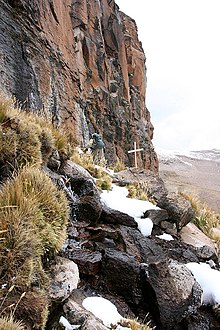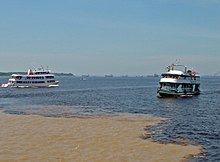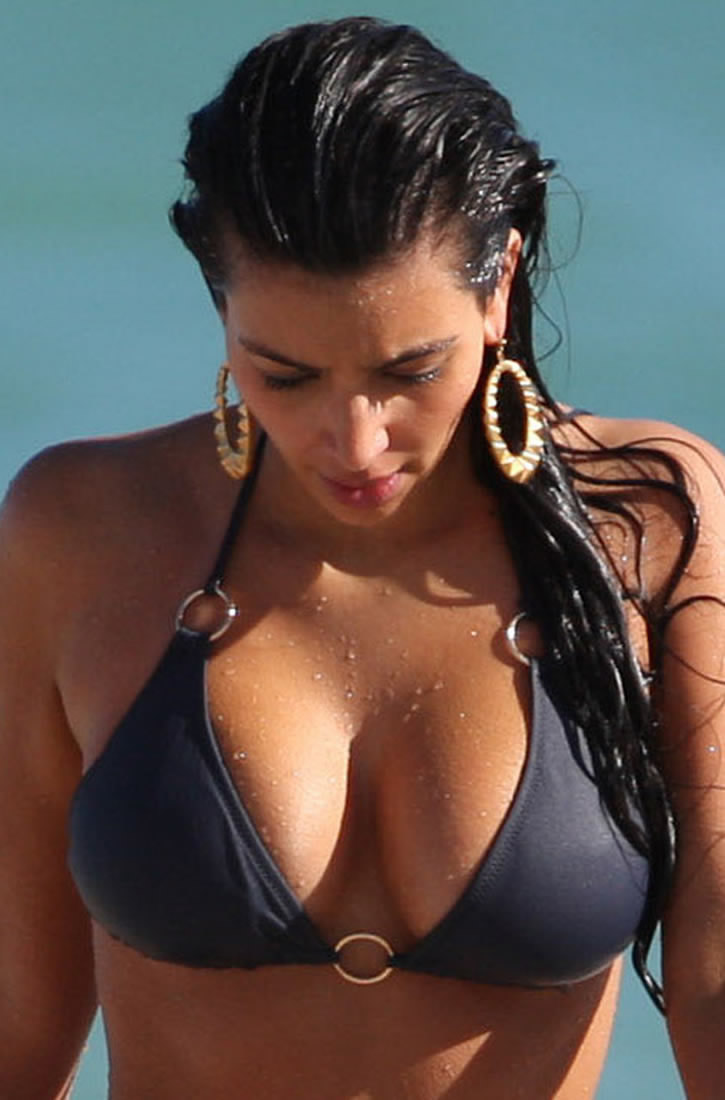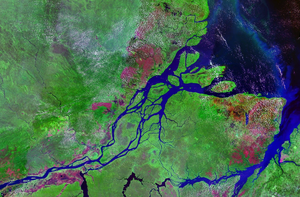|
|
|---|
Monday, October 18, 2010
Amazon River and it's great history-
This article is about the river. For other uses, see Amazon (disambiguation).
Coordinates:  0°10′0″S 49°0′0″W / 0.166667°S 49°W
0°10′0″S 49°0′0″W / 0.166667°S 49°W
 0°10′0″S 49°0′0″W / 0.166667°S 49°W
0°10′0″S 49°0′0″W / 0.166667°S 49°W / -0.166667; -49
Rio Amazonas; Spanish: Río Amazonas; pronounced /ˈæməzɒn/ (US); /ˈæməzən/ (UK)) of South America is the largest river in the world with a total discharge greater than the next ten largest rivers combined. The Amazon, which has the largest drainage basin in the world, about 7,050,000 square kilometres (2,720,000 sq mi), accounts for approximately one-fifth of the world's total river flow.In its upper stretches the Amazon river is called Apurímac (in Peru) and Solimões (in Brazil).
The width of the Amazon varies between 1.6 and 10 kilometres (0.99 and 6.2 mi) at low stage, but expands during the wet season to 48 kilometres (30 mi) or more. The river enters the Atlantic Ocean in a broad estuary about 240 kilometres (150 mi) wide. The mouth of the main stem is 80 kilometres (50 mi). Because of its vast dimensions, it is sometimes called The River Sea. At no point is the Amazon crossed by bridges. This is not because of its huge dimensions; in fact, for most of its length, the Amazon's width is well within the capability of modern engineers to bridge. However, the bulk of the river flows through tropical rainforest, where there are few roads and even fewer cities, so there is no need for crossings.
While the Amazon is the largest river in the world by most measures, the current consensus within the geographic community holds that the Amazon is the second longest river, just slightly shorter than the Nile. However, in the late 20th and early 21st centuries debate has intensified over the Amazon's true source and therefore its length. Some studies have concluded that the Amazon is longer than the Nile.
Drainage area-
Main article: Amazon Basin
The Amazon Basin, the largest drainage basin in the world, covers about 40 percent of South America, an area of approximately 7,050,000 square kilometres (2,720,000 sq mi). It gathers its waters from 5 degrees north latitude to 20 degrees south latitude. Its most remote sources are found on the inter-Andean plateau, just a short distance from the Pacific Ocean.The Amazon River and its tributaries are characterized by extensive forested areas that become flooded every rainy season. Every year the river rises more than 9 metres (30 ft), flooding the surrounding forests, known as várzea ("flooded forests"). The Amazon's flooded forests are the most extensive example of this habitat type in the world. In an average dry season, 110,000 square kilometres (42,000 sq mi) of land are water-covered, while in the wet season, the flooded area of the Amazon Basin rises to 350,000 square kilometres (140,000 sq mi).
The quantity of water released by the Amazon to the Atlantic Ocean is enormous: up to 300,000 cubic metres per second (11,000,000 cu ft/s) in the rainy season, with an average of 209,000 cubic metres per second (7,400,000 cu ft/s) from 1973 to 1990. The Amazon is responsible for about 20% of the Earth's freshwater entering the ocean. The river pushes a vast plume of freshwater into the ocean. The plume is about 400 kilometres (250 mi) long and between 100 and 200 kilometres (62 and 120 mi) wide. The freshwater, being lighter, overrides the salty ocean, diluting the salinity and altering the color of the ocean surface over an area up to 1,000,000 square miles (2,600,000 km2) large. For centuries ships have reported freshwater near the Amazon's mouth yet well out of sight of land in what otherwise seemed to be the open ocean.
The Atlantic has sufficient wave & tidal energy to carry most of the Amazon's sediments out to sea, thus the Amazon does not form a true delta. The great deltas of the world are all in relatively protected bodies of water while the Amazon empties directly into the turbulent Atlantic.
The bore is the reason the Amazon does not have a protruding delta; the ocean rapidly carries away the vast volume of silt carried by the Amazon, making it impossible for a delta to grow past the shoreline.[clarification needed]
There is a natural water union between the Amazon and the Orinoco basins, the so-called Casiquiare canal. The Casiquiare is a river distributary of the upper Orinoco, which flows southward into the Rio Negro, which in turn flows into the Amazon. The Casiquiare is the largest river on the planet that links two major river systems, a so called bifurcation.
Origins-

The Amazon originates from the Apacheta cliff in Arequipa at the Nevado Mismi, with a sole sign of a wooden cross.

Source of the Amazon
The most distant source of the Amazon was established in 1996, 2001, 2007, and 2008, as a glacial stream on a snowcapped 5,597 m (18,363 ft) peak called Nevado Mismi in the Peruvian Andes, roughly 160 km (99 mi) west of Lake Titicaca and 700 km (430 mi) southeast of Lima. The waters from Nevado Mismi flow into the Quebradas Carhuasanta and Apacheta, which flow into the Río Apurímac which is a tributary of the Ucayali which later joins the Marañón to form the Amazon proper. While the Ucayali–Marañón confluence is the point at which most geographers place the beginning of the Amazon proper, in Brazil the river is known at this point as the Solimões das Águas. Shortly downriver from that confluence the darkly colored waters of the Rio Negro meet the sandy colored Rio Solimões, and for over 6 km (4 mi) these waters run side by side without mixing.
After the confluence of Río Apurímac and Ucayali, the river leaves Andean terrain and is instead surrounded by floodplain. From this point to`the Marañón, some 1,600 km (990 mi), the forested banks are just out of water, and are inundated long before the river attains its maximum flood stage. The low river banks are interrupted by only a few hills, and the river enters the enormous Amazon Rainforest.
The river systems and flood plains in Brazil, Peru, Ecuador, Colombia and Venezuela, whose waters drain into the Solimões and its tributaries are called the "Upper Amazon". The Amazon River proper runs mostly through Brazil and Peru, it is part of the border between Colombia and Perú, and it has tributaries reaching into Venezuela, Colombia, Ecuador, and Bolivia.
Flooding-

A NASA satellite image of a flooded portion of the river.
The average depth of the Amazon between Manacapuru and Óbidos has been calculated as between 20 to 26 metres (66 to 85 ft). At Manacapuru the Amazon's water level is only about 24 metres (79 ft) above mean sea level. More than half of the water in the Amazon downstream of Manacapuru is below sea level. In its lowermost section the Amazon's depth averages 20 to 50 metres (66 to 160 ft), in some places as much as 100 metres (330 ft).
The main river is navigable for large ocean steamers to Manaus, 1,500 kilometres (930 mi) upriver from the mouth. Smaller ocean vessels of 3,000 tons or 9,000 tons and 5.5 metres (18 ft) draft can reach as far as Iquitos, Peru, 3,600 kilometres (2,200 mi) from the sea. Smaller riverboats can reach 780 kilometres (480 mi) higher as far as Achual Point. Beyond that, small boats frequently ascend to the Pongo de Manseriche, just above Achual Point.
Geography-

Meeting of Waters is the confluence of the Rio Negro (black) and the Rio Solimões (sandy) near Manaus, Brazil.
From the town of Canaria at the great bend of the Amazon to the Negro, only very low land is found, resembling that at the mouth of the river.[citation needed] Vast areas of land in this region are submerged at high water, above which only the upper part of the trees of the sombre forests appear. Near the mouth of the Rio Negro to Serpa, nearly opposite the river Madeira, the banks of the Amazon are low, until approaching Manaus, they rise to become rolling hills. At Óbidos, a bluff 17 m (56 ft) above the river is backed by low hills. The lower Amazon seems to have once been a gulf of the Atlantic Ocean, the waters of which washed the cliffs near Óbidos.
Only about ten percent of the Amazon's water enters downstream of Óbidos, very little of which is from the northern slope of the valley. The drainage area of the Amazon Basin above Óbidos city is about 5,000,000 square kilometres (1,900,000 sq mi), and, below, only about 1,000,000 square kilometres (390,000 sq mi) (around 20%), exclusive of the 1,400,000 square kilometres (540,000 sq mi) of the Tocantins basin. The Tocantins River enters the Amazon very close to its mouth.
In the lower reaches of the river, the north bank consists of a series of steep, table-topped hills extending for about 240 kilometres (150 mi) from opposite the mouth of the Xingu as far as Monte Alegre. These hills are cut down to a kind of terrace which lies between them and the river.
On the south bank, above the Xingu, an almost-unbroken line of low bluffs bordering the floodplain extends nearly to Santarém, in a series of gentle curves before they bend to the southwest, and, abutting upon the lower Tapajós, merge into the bluffs which form the terrace margin of the Tapajós river valley.
Mouth-

A satellite image of the mouth of the Amazon River, looking south
If the Pará river and the Marajó island ocean frontage are included, the Amazon estuary is some 325 kilometres (202 mi) wide. In this case, the width of the mouth of the river is usually measured from Cabo Norte, in the Brazilian state of Amapá, to Ponta da Tijoca near the town of Curuçá, in the state of Pará. By this criterion, the Amazon is wider at its mouth than the entire length of the River Thames in England.
A more conservative measurement excluding the Pará river estuary, from the mouth of the Araguari River to Ponta do Navio on the northern coast of Marajó, would still give the mouth of the Amazon a width of over 180 kilometres (110 mi). If only the river's main channel is considered, between the islands of Curuá (state of Amapá) and Jurupari (state of Pará), the width falls to about 15 kilometres (9.3 mi).
Tidal bore (pororoca)-
The tension between the river's strong push and the Atlantic's tides causes a phenomenon called a tidal bore, known locally as the pororoca, in which the leading edge of the incoming tide forms a waves of water that travel upriver against the direction of the river's current. Tidal bores occur at the mouth of the Amazon and other nearby coastal rivers several times a year at high tide. Tidal bores also occur in other river around the world, but the Amazon's are among the world's highest and fastest, perhaps second only to those of Qiantang River in China. The pororoca flows up to 4 metres (13 ft) high and running at up to 13 miles per hour (21 km/h).The pororoca occurs especially where depths do not exceed 7 metres (23 ft). It starts with a very loud roar, constantly increasing, and advances at the rate of 15–25 km/h (9–16 mph), with a breaking wall of water 1.5–4.0-metres (5–13 ft) high that may travel violently several kilometres up the Amazon and other rivers close to its mouth. It is particularly intense in the rivers of the coast of the state of Amapá north of the mouth of the Amazon, such as the Araguari River, but can be observed in Pará rivers as well.
The region near the Amazon's mouth also has very high tides, sometimes reaching 6 metres (20 ft) and has become a popular spot for river surfing.
Wildlife-

Characins, such as the piranha species, are prey for the Giant Otter, but these aggressive fish may also pose a danger to humans.
Along with the Orinoco, the Amazon is one of the main habitats of the boto, also known as the Amazon River Dolphin (Inia geoffrensis). It is the largest species of river dolphin, and it can grow to lengths of up to 2.6 metres (8.5 ft). ). The color of its skin changes with age. It varies from gray when it is young, to pink and white as it matures. The boto is the subject of a very famous legend in Brazil about a dolphin that turns into a man and seduces maidens by the riverside. The tucuxi (Sotalia fluviatilis), also a dolphin species, is found both in the rivers of the Amazon Basin and in the coastal waters of South America.
The Amazonian Manatee also known as “seacow” is found in the northern Amazon River Basin and its tributaries. It is a mammal and an herbivore. It is classified as vulnerable by the IUCN.
The Amazon and its tributaries are the main habitat of the Giant Otter (Pteronura brasiliensis). The giant otter is a member of the weasel family and is the largest of its kind. Because of habitat destruction and hunting its population has dramatically decreased.
Also present in large numbers is the notorious piranha, a carnivorous fish which congregates in large schools, and may attack livestock and even humans. There are approximately from 30 to 60 species of piranha. However, only a few of its species are known to attack humans, most notably Pygocentrus nattereri, the Red-bellied Piranha.
The bull shark (Carcharhinus leucas) has been reported 4,000 kilometres (2,500 mi) up the Amazon River at Iquitos in Peru. The arapaima, known in Brazil as the pirarucu (Arapaima gigas), is a South American tropical freshwater fish. It is one of the largest freshwater fish in the world, reportedly with a maximum length in excess of 4.5 metres (15 ft) and weight up to 200 kilograms (440 lb). Another Amazonian freshwater fish is the arowana (or aruanã in Portuguese), such as the Silver arowana (Osteoglossum bicirrhosum), which is also a predator and very similar to the arapaima, but only reaches a length of maximum 120 centimetres (47 in). The candirú are a number of genera of parasitic, freshwater catfish in the family Trichomycteridae; all are native to the Amazon River. The electric eel (Electrophorus electricus) is also found in the river.
The anaconda snake is found in shallow waters in the Amazon Basin. One of the world's largest species of snake, the anaconda spends most of its time in the water, with just its nostrils above the surface. In addition to the thousands of species of fish, the river supports crabs, algae, and turtles.
Colonial encounters with the Amazon-
See also: Timeline of Amazon history
During what many archaeologists call the formative period, Amazonian societies were deeply involved in the emergence of South America's highland agrarian systems, and possibly contributed directly to the social and religious fabric constitutive of the Andean civilizational orders.In 1500, Vicente Yáñez Pinzón was the first European to sail into the river. Pinzón called the river flow Río Santa María del Mar Dulce, later shortened to Mar Dulce (literally, sweet sea, because of its freshwater pushing out into the ocean). For 350 years after the first European encounter of the Amazon by Pinzón, the Portuguese portion of the basin remained an untended former food gathering and planned agricultural landscape occupied by the indigenous peoples who survived the arrival of European diseases. There is ample evidence for complex large-scale, pre-Columbian social formations, including chiefdoms, in many areas of Amazonia (particularly the inter-fluvial regions) and even large towns and cities. For instance the pre-Columbian culture on the island of Marajó may have developed social stratification and supported a population of 100,000 people. The Native Americans of the Amazon rain forest may have used Terra preta to make the land suitable for the large scale agriculture needed to support large populations and complex social formations such as chiefdoms.
One of Gonzalo Pizarro's lieutenants, Francisco de Orellana, set off in 1541 to explore east of Quito into the South American interior in search of El Dorado and the "Country of Cinnamon". He was ordered to follow the Coca River and return when the river reached its confluence. After 170 km, the Coca River joined the Napo River (at a point now known as Puerto Francisco de Orellana), and his men threatened to mutiny if he followed his orders and the expedition turned back. On 26 December 1541, he accepted to change the purpose of the expedition to the conquest of new lands in the name of the King of Spain, and the 49 men built a larger boat in which to navigate downstream. After a journey of 600 km down the Napo River, constantly threatened by the Omaguas, they reached a further major confluence, at a point near modern Iquitos, and then followed what is now known as the Amazon River for a further 1200 km to its confluence with the Rio Negro (near modern Manaus), which they reached on 3 June 1542. This area around the Amazon was dominated by the Icamiaba natives, who were mistaken for fierce female warriors by the members of the expedition.
Orellana later narrated the belligerent victory of the Icamiaba “women” over the Spanish invaders to Charles V, Holy Roman Emperor, who, recalling the Amazons of Greek mythology, baptized the river Amazonas, the name by which it is still known in both Spanish and Portuguese. At the time, however, the river was referred to by the expedition as Grande Río ("Great River"), Mar Dulce ("Freshwater Sea") or Río de la Canela ("Cinnamon River"). Orellana claimed that he had found great cinnamon trees there, in other words a source of one of the most important spices reaching Europe from the East. In fact, true cinnamon (Cinnamomum verum) is not native to South America. Other related cinnamon-containing plants (of the family Lauraceae) do occur and Orellana must have observed some of these. The expedition continued a further 1200 km to the mouth of the Amazon, which it reached on 24 August 1542, demonstrating the practical navigability of the Great River. This was surely one of the most improbably successful voyages in known history.
In 1560 another Spanish conquistador, Lope de Aguirre, made the second descent of the Amazon.
In 1637–47 the Portuguese explorer Pedro Teixeira was the first European to ascend the river from Belém, near the mouth, to Quito, part of the Spanish Viceroyalty of Peru, and then to return the same way. Teixeira's expedition was massive—some 2000 people in 37 large canoes. From 1648 to 1652, António Raposo Tavares lead one of the longest known expeditions from São Paulo to the mouth of the Amazon, investigating many of its tributaries, including the Rio Negro, and covering a distance of more than 10,000 km (6,214 mi).
In what is currently Brazil, Ecuador, Bolivia, Colombia, Peru, and Venezuela, a number of colonial and religious settlements were established along the banks of primary rivers and tributaries for the purpose of trade, slaving and evangelization among the indigenous peoples of the vast rain forest, such as the Urarina. Father Fritz, apostle of the Omaguas, established some forty mission villages. Charles Marie de La Condamine accomplished the first scientific exploration of the Amazon River.
The Cabanagem, one of the bloodiest regional wars ever in Brazil, which was chiefly directed against the white ruling class, reduced the population of Pará from about 100,000 to 60,000.
The total population of the Brazilian portion of the Amazon Basin in 1850 was perhaps 300,000, of whom about two-thirds comprised by Europeans and slaves, the slaves amounting to about 25,000. The Brazilian Amazon's principal commercial city, Pará (now Belém), had from 10,000 to 12,000 inhabitants, including slaves. The town of Manáos, now Manaus, at the mouth of the Rio Negro, had a population between 1,000 to 1,500. All the remaining villages, as far up as Tabatinga, on the Brazilian frontier of Peru, were relatively small.
Post-colonial history-

Henry Walter Bates was most famous for his expedition to the Amazon (1848–1859).
At first, navigation was principally confined to the main river; and even in 1857 a modification of the government contract only obliged the company to a monthly service between Pará and Manaus, with steamers of 200 tons cargo capacity, a second line to make six round voyages a year between Manaus and Tabatinga, and a third, two trips a month between Pará and Cametá. This was the first step in opening up the vast interior.
The success of the venture called attention to the opportunities for economic exploitation of the Amazon, and a second company soon opened commerce on the Madeira, Purus and Negro; a third established a line between Pará and Manaus; and a fourth found it profitable to navigate some of the smaller streams. In that same period, the Amazonas Company was increasing its fleet. Meanwhile, private individuals were building and running small steam craft of their own on the main river as well as on many of its tributaries.
On 31 July 1867 the government of Brazil, constantly pressed by the maritime powers and by the countries encircling the upper Amazon basin, especially Peru, decreed the opening of the Amazon to all flags; but limited this to certain defined points: Tabatinga — on the Amazon; Cametá — on the Tocantins; Santarém — on the Tapajós; Borba — on the Madeira, and Manaus — on the Rio Negro. The Brazilian decree took effect on 7 September 1867.
Thanks in part to the mercantile development associated with steamboat navigation, coupled with the internationally driven demand for natural rubber (1880–1920), Manáos (now Manaus) and Pará (now Belém) in (Brazil), and Iquitos, Peru became thriving, cosmopolitan centers of commerce and spectacular—albeit illusory—"modern" "urban growth". This was particularly the case for Iquitos during its late 19th and early 20th century Rubber Bonanza zenith when this dynamic boomtown was known abroad as the St. Louis of the Amazon. Foreign companies settled in this city, from where they controlled the extraction of rubber. In 1851 Iquitos had a population of 200 and by 1900 its population reached 20,000. In the 1860s, approximately 3,000 tons of rubber was being exported annually and by 1911 annual exports had grown to 44,000 tons, representing 9.3% of Peru’s exports. During the rubber boom it is estimated that diseases brought by immigrants such as typhus or malaria killed 40,000 native Amazonians.
The first direct foreign trade with Manaus was commenced around 1874. Local trade along the river was carried on by the English successors to the Amazonas Company—the Amazon Steam Navigation Company—as well as numerous small steamboats, belonging to companies and firms engaged in the rubber trade, navigating the Negro, Madeira, Purus and many other tributaries, such as the Marañón to ports as distant as Nauta, Peru. The Amazon Steam Navigation Company had 38 vessels.
By the turn of the 20th century, the principal exports of the Amazon Basin were India-rubber, cacao beans, Brazil nuts and a few other products of minor importance, such as pelts and exotic forest produce (resins, barks, woven hammocks, prized bird feathers, live animals, etc.) and extracted goods (lumber, gold, etc.).
20th century concerns-

Manaus, the largest city in Amazonas, as seen from a NASA satellite image, surrounded by the dark Rio Negro and the muddy Amazon River.
Wary of foreign exploitation of the nation's resources, Brazilian governments in the 1940s set out to develop the interior, away from the seaboard, where foreigners owned large tracts of land. The original architect of this expansion was President Getúlio Vargas, with the demand for rubber from the Allied forces in World War II providing funding for the drive.
In 1960, the construction of the new capital city of Brasília in the interior also contributed to the opening up of the Amazon Basin. A large-scale colonization program saw families from Northeastern Brazil relocated to the forests, encouraged by promises of cheap land. Many settlements grew along the road from Brasilia to Belém, but rainforest soil proved difficult to cultivate.
Images for biggest river in the world-
Thank you for the feedback. Report another imagePlease report the offensive image. CancelDoneStill, long-term development plans continued. Roads were cut through the forests, and in 1970, the work on the Trans-Amazonian highway (Transamazônica) network began. The network's three pioneering highways were completed within ten years, but never fulfilled their promise. Large portions of the Trans-Amazonian and its accessory roads, such as BR-319 (Manaus-Porto Velho), are derelict and impassable in the rainy season. Small towns and villages are scattered across the forest and because its vegetation is so dense, some remote areas are still unexplored.
With a current population of 1.8 million people, Manaus is the Amazon’s largest city. Manaus alone represents approximately 50% of the population of the Brazilian state of Amazonas, which is the largest state. The racial makeup of the city is 64% Pardo (Mulatto and mestizo) and 32% White.
Dispute regarding length-
While debate as to whether the Amazon or the Nile is the world's longest river has gone on for many years, the historic consensus of geographic authorities has been to regard the Amazon as the second longest river in the world, with the Nile being the longest. However, the Amazon has been measured by different geographers as being anywhere between 6,259 and 6,800 kilometres (3,889 and 4,200 mi) long. It is often said to be "at least" 6,400 kilometres (4,000 mi) long. The Nile is reported to be anywhere from 5,499 to 6,690 kilometres (3,417 to 4,160 mi). Often it is said to be "about" 6,650 kilometres (4,130 mi) long. There are many factors that can affect these measurements.A study by Brazilian scientists concluded that the Amazon is actually longer than the Nile. Using Nevado Mismi, which in 2001 was labeled by the National Geographic Society as the Amazon's source, these scientists made new calculations of the Amazon's length. They calculated the Amazon's length as 6,992 kilometres (4,345 mi). Using the same techniques they calculated the length of the Nile as 6,853 kilometres (4,258 mi), which is longer than previous estimates but still shorter than the Amazon. Guido Gelli, director of science at the Brazilian Institute of Geography and Statistics (IBGE), told the Brazilian TV network Globo in June 2007 that it could be considered as a fact that the Amazon was the longest river in the world. However, other geographers have had access to the same data since 2001, and a consensus has yet to emerge to support the claims of these Brazilian scientists. As of 2010 the length of both the Amazon and the Nile remains open to interpretation and continued debate.
From Wikipedia-
0 Comments:
Subscribe to:
Post Comments (Atom)

















